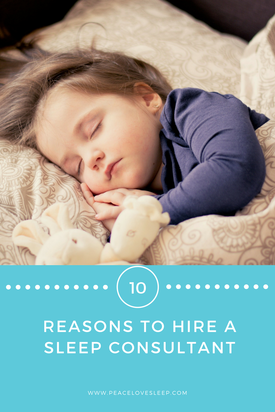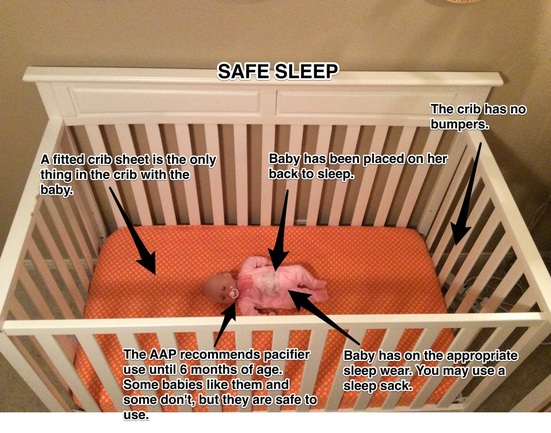 When most people find out what I do, their first reaction is, “I didn’t even know that existed!” That is usually followed up by, “So what is it that you do for people?” So here is a list of the top 10 reasons why you need a sleep consultant in your life! 10. You are too tired to read that book about sleep. New parents are sleep deprived. They are waking up multiple times a night, and sometimes staying up for hours with their infants. By the time they realize they have a problem, they are way beyond being able to comprehend the information in that 400 page book about infant sleep. And even if you do find the energy and time to read some of it, you’ll probably realize you’ve missed the boat on setting up a healthy foundation for sleep, and you’ll likely be asking yourself, “Well, now what?” 9. I am an expert. I went to school for this! I spent many hours learning about healthy sleep for infants and children, so that you don’t have to go searching for the answers. I learned from the best of the best, Deb Pedrick, with the Family Sleep Institute. I have read all of the sleep books, I have researched the methods, I have completed assignments and projects, I engage in continuing professional development, all in the desire to help your family get the sleep they need and deserve! I started this business because I wanted to help people. Let me use my expertise to help you! 8. You don't have to spend hours searching Google for "infant sleep" or "How do I get my baby to sleep?" I’m your Google search! I know that every single parent out there has probably entered those search terms into Google before, looking for the right answers. The amount of information you are likely to get back from a search like that is overwhelming. How are you supposed to know which ones to read? How are you supposed to know which ones will actually make a difference? How are you supposed to know that the person behind the information is credible? I’m your Sleep Google! 7. I take the guess work out. When you’re sleep training, you will probably have a million questions. Should I do this? Should I do that? Do I go in there? What time should that be? No more guess work. I’ll give you the plan, and I’ll be there to answer questions along the way. You will have questions, and instead of wondering if you’re making the right choice, you’ll be able to ask me. 6. Different Parents, Different Methods Every parent has their own thoughts and feelings about what is the appropriate way to parent their child. Our backgrounds and experiences shape who we are as parents and lead us to make different choices for our kids. One size doesn’t fit all. I’m trained in several different methods, and we can discuss which one fits your parenting style and comfort level. I can lead you through a method that speaks to you as a parent. 5. I’ll be your cheerleader. Does the idea of sleep training sound exhausting? I’m here to cheer you on when you feel like giving up, or when you need that bit of encouragement that what you are doing is working and it matters. I’m here to support you and let you know that giving your child the ability to put themselves to sleep is something they will continue to use for the rest of their lives. I’m your accountability partner. I'll know your goals, and I'll be able to help you keep on track to achieve those goals. I’ll keep you going! 4. When things get tough, call me! I won’t sugar coat it, sleep training can be difficult at times. Every child is different, and they are going to react differently to the process. At times you may feel frustrated with the process or with your child. That’s where I come in. I’m here to remind you why you’re doing this. I’m here to talk you through your frustrations and help you troubleshoot and problem solve. If something isn't working, I'll help you fix it. 3. The future is bright! When I’m working with clients, I often get asked “Well what about when…” questions. No matter what age your child is when you begin the process, their needs are going to change as they get older. I’ll be able to answer your questions about the changing sleep needs of your child. You’ll be able to reference them when you’re going through those changes. You’ll have the knowledge you need to keep your child sleeping through the years. 2. Take back your evenings. Make that dinner together. Share that bottle of wine. Have that meaningful conversation. You give all of your energy to your kids all day long, and then you continue to have to help your kids get to sleep at night. That doesn’t leave much time for you and your partner to spend together and to grow your relationship. One of the best things you can do for your kids is to show them how much you love your spouse. It’s hard to make that felt, when you don’t have any time or energy to work on your relationship. I can help you get your kids going to bed at an appropriate time, and you can finally have that time together! 1. Enjoy your kids. Isn't that what it's all about? Before I went through the sleep training process with my kids, I was exhausted. My kids never napped at the same time, and would only nap in 20 or 30 minute spurts. And even when they were awake, they were unhappy. They always wanted to be held, and they seemed like they were always crying. When my kids starting sleeping, I saw them in a whole new light. They became different babies. They smiled more, cried less, and learned faster. It was amazing to see the change. I was finally able to enjoy my time with them in a way I never could before. What are you waiting for? Send me a message, and let's talk today about getting your family the sleep you need!
1 Comment
 I can't count the number of movies and commercials I have seen that show sleeping infants with pillows, blankets, and stuffed animals surrounding them in the crib. How many advertisements show the perfect crib bedding set with bumpers on the crib? We are constantly shown images of sleeping babies in an unsafe environment. Parents and caregivers don't know what they don't know, which is why I have chosen this very important topic for my first post. You have likely heard of Sudden Infant Death Syndrome, or SIDS. SIDS is an unexplained death of an otherwise heathy infant under 12 months old. Many times the death happens during sleep. There are steps that you can take as they relate to sleep to reduce your baby's risk of SIDS. Over the past few decades there has been a significant decrease in SIDS due to the Back to Sleep Campaign. Always place your baby to sleep on her back. Placing your baby on her back to sleep greatly reduces the risk of SIDS. "But my baby hates laying on her back!" Yes, it is true that babies tend to fuss (okay...scream!) when placed on their back. However, you are the parent, and you know that placing your baby on her back to sleep is what is best for her. Let's talk bedding. If your baby is under 12 months of age, he/she should be sleeping on a firm surface with nothing but a fitted sheet. That's it. No bumpers. No pillows. No blankets. Just a crib mattress with a fitted sheet. "But my perfect bedding set came with the most adorable bumpers!" Sure the bumpers look cute, but bumpers, pillows, blankets, stuffed animals, etc. all increase the risk for suffocation and strangulation. "But won't they get stuck in the crib?" It is possible that your baby might get an arm or a leg out of the slats of the crib, but they are going to be okay. The bumpers pose much more of a hazard than getting an arm stuck in the slats. After 12 months of age your baby is no longer at risk for SIDS and it is safe to give them a blanket or a stuffed animal. However, I caution you from giving them too many things in the crib because eventually they may use them to launch themselves out! How should you dress your baby for sleep? Do not overdress your baby. Keep the room cool. Footed pajamas that are close fitting to the body are great for baby to sleep in. They come in sizes from newborn to 5T. If you feel like baby needs an extra layer, you can put them in a sleep sack. A sleep sack is essentially a wearable blanket. It allows you to give your baby some extra warmth while keeping them safe. Swaddling is safe until your baby learns to turn over. If your baby is able to turn over, it is time to take away the swaddle. Please know that these are the recommendations from the American Academy of Pediatrics (AAP) and they are the recommendations because they have been found to be the safest sleeping environment for your baby. There are too many stories in the news of well meaning parents or caregivers using props or blankets to "help" baby sleep that end in tragedy. Given the opportunity, your baby is able to learn how to sleep in the environment you have set up for her. Make it a safe one so you can sleep peacefully at night! If you want more information about safe sleep, the AAP runs the site healthychildren.org. It has a wealth of information on various topics, including safe sleep. |
AuthorSamantha Kohler, Certified Infant and Child Sleep Consultant ArchivesCategories |
 RSS Feed
RSS Feed